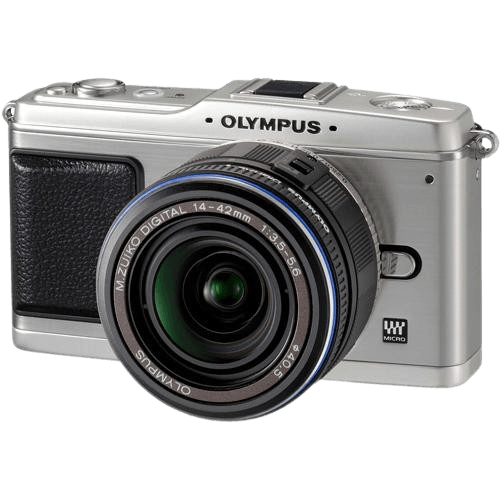Olympus PEN E-P1 Specs and Scores

The Olympus PEN E-P1 scores a 40/100 in our evaluation. This mirrorless camera, announced on June 16, 2009, and released the same year, initially retailed for $1,098. Measuring 121 x 70 x 36mm and weighing 355g (0.78lbs), the E-P1 has a compact design. However, considering the advancements in camera technology since 2009, the E-P1 may struggle to compete with newer models in today’s market.
Olympus PEN E-P1 Overview and Optics
The Olympus PEN E-P1 receives a score of 45/100 for its optics. This camera features a 12.3-megapixel NMOS sensor, a TruePic V processor, and a Micro Four Thirds sensor size. It also has a shooting speed of 3 frames per second, a DXOMARK score of 55 for the sensor, and a Micro 4/3 lens mount. The E-P1 also includes image stabilization and a 4:3 aspect ratio.
Comparing these specifications to the current market, the E-P1 falls short in some areas. The 12.3-megapixel sensor is considered low, as modern cameras offer higher resolution. Additionally, a shooting speed of 3 frames per second is slow compared to the fast-paced photography needs of today’s users.
Despite these shortcomings, the Olympus PEN E-P1 still offers valuable features such as image stabilization and a Micro 4/3 lens mount, which allows for a wide range of lens options. However, it is essential to weigh these benefits against the limitations of its optics when considering the E-P1 as a viable option in today’s competitive camera market.
Olympus PEN E-P1 Video Performance
The Olympus PEN E-P1 lacks video capabilities. This camera focuses solely on photography, providing no option to record video.
Olympus PEN E-P1 Features and Benefits
The Olympus PEN E-P1 receives a feature score of 36 out of 100. This camera has a 3-inch screen with a resolution of 230,000 dots. However, it lacks some modern features, such as a touchscreen, flip screen, GPS, WiFi, and Bluetooth capabilities.
Comparing with today’s market, the E-P1 falls short in providing the convenience and connectivity that many photographers look for in a camera. The absence of a touchscreen and flip screen limits flexibility in shooting angles and user interaction. Furthermore, the lack of GPS, WiFi, and Bluetooth hinders seamless photo sharing and location tagging, which are now common features in contemporary cameras.
Despite its low feature score, the Olympus PEN E-P1 still offers decent image quality and performance. However, potential buyers should consider the camera’s limitations and weigh them against their specific photography needs and desired features.
Olympus PEN E-P1 Storage and Battery
The Olympus PEN E-P1’s storage and battery performance receives a score of 16/100. This camera has one memory card slot, accepting SD and SDHC cards for storage. Compared to modern cameras, the single memory card slot may limit storage capacity, as many now offer dual slots.
Regarding battery life, the E-P1 offers 300 shots per charge using the BLS-1 battery type. This falls short in today’s market, as many cameras provide longer battery life. Additionally, the E-P1 lacks USB charging, a convenient feature present in newer models.
The Olympus PEN E-P1 falls behind in storage and battery capabilities when compared to current camera models, offering limited memory card slots, shorter battery life, and no USB charging option.
